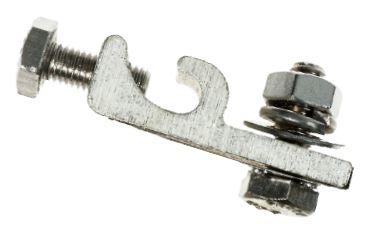
Solar panels require grounding. Whether it’s a rooftop or ground-mounted installation, you’ll need to implement some type of ground solution. While there are different ways to ground solar panels, though, using grounding lugs is one of the easiest methods.
What Are Grounding Lugs?
Grounding lugs are conductive fasteners that are used to secure a grounding conductor. Grounding conductors typically consist of copper wires. They are used to provide a safe and alternate path for excess electricity.
Wiring faults in circuits can cause catastrophic damage to the connected devices. Solar panel installations consist of a circuit. And they contain many different devices, such as batteries, photovoltaic (PV) cells, inverters and more. To protect these devices from damage, grounding is required.
Grounding will ensure that any excess electricity travels to the ground rather than the connected devices — or even the home or building to which the solar panels provide power. In the event of excess electricity, the grounding conductor will guide the excess electricity to the ground.
How Grounding Lugs Work on Solar Panels
Most solar panel installations consist of a single conductor that’s daisy-chained with multiple grounding lugs. The grounding lugs are used to secure this conductor to the solar panel frames. After installing the grounding lugs on the frames, you can run the conductor through them. The grounding lugs will hold the conductor in place while ensuring that your solar panels are properly grounded.
Grounding lugs are resistant to corrosion. After all, solar panels are installed outdoors where they are exposed to the rain and humidity. With their corrosion-resistant properties, grounding lugs can withstand the weather. They’ll continue to offer a safe path to the ground for excess electricity without corroding.
Lay-in grounding lugs are particularly easy to use. You can simply “lay” the conductor inside of them. Lay-in grounding lugs feature a screw that you can adjust by hand. To ground your solar panels, you’ll need to loosen this screw. You can then place the conductor inside of the grounding lug, followed by retightening the screw. As the screw presses against the conductor, it will hold the conductor in place.
In Conclusion
When installing solar panels, you’ll need to implement a grounding solution. Solar panels can sustain damage from wiring faults, lightning strikes or other forms of excess electricity. With a grounding solution, you can prevent this from happening. Grounding lugs are fasteners that are used in conjunction with a conductor to ground solar panel installations.

